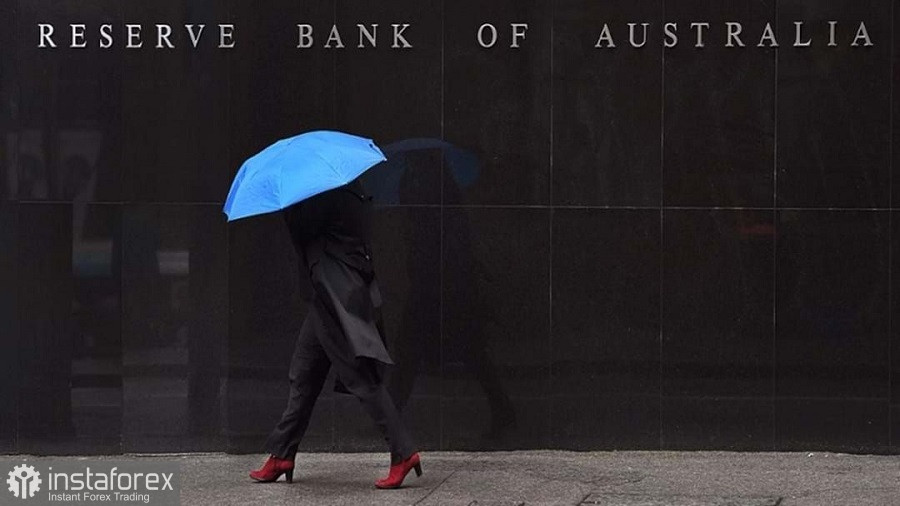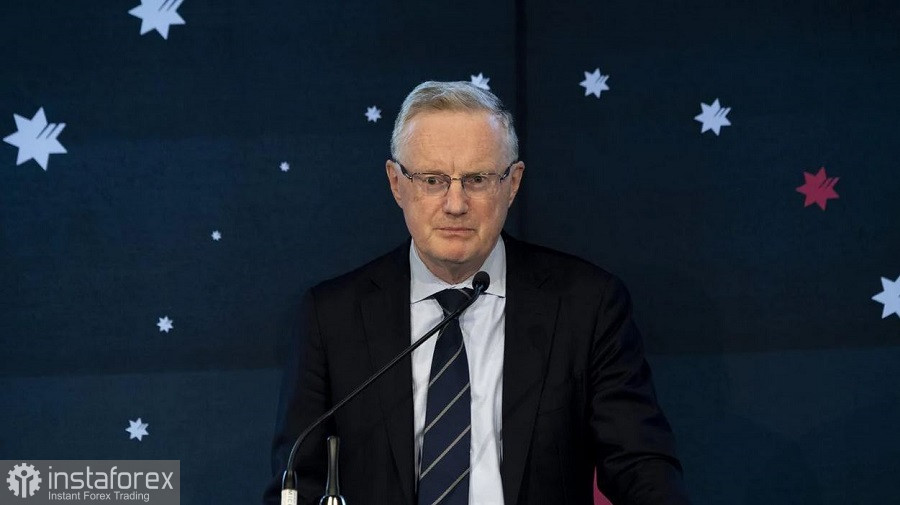Today, the Reserve Bank of Australia increased the interest rate by 25 basis points at its November's policy meeting, meeting market expectations. The RBA's governor struck a milder tone, advocating for a moderate pace of monetary policy tightening despite the continued rise of inflation.

Following the November's meeting of the RBA, many cross pairs including the Australian dollar, particularly AUD/NZD, declined due to disappointment of traders. However, AUD/USD performed well and even began an upward correction after a 3-day decline earlier. This rally might seem strange, as the RBA's meeting results were not favorable for the Australian dollar. AUD/USD's upward movement was in fact caused by USD retreating ahead of the Fed policy decision.
This once again confirms that the Australian dollar usually follows the trajectory of its US counterpart. If tomorrow's Fed meeting boosts the US dollar, AUD/USD will move down, as there are no factors that could give support to the Aussie at this point. Besides RBA's policy, recent news from China are also indirectly pressuring the Australian currency.
Yesterday's batch of Chinese macroeconomic data suggests that China's economy is contracting. In October, China's manufacturing PMI decreased to 49.2, while services PMI slid down to 48.7. The services index has been on the decline for four consecutive months.
Furthermore, China is facing another outbreak of COVID-19. 2,675 infections were reported on Sunday, up 802 from the day before. It is the first big upsurge of new infections in three months. The coronavirus is rapidly spreading in more than half of China's provinces, including the country's key economic regions. Chinese authorities have ordered lockdowns in central and north-west China in response to this outbreak.
Australia is China's biggest trading partner, and such disruptions have a negative impact on the Australian economy.
In the previous month, the Reserve Bank of Australia increased interest rates by only 25 basis points after several consecutive 50 bps hikes. The regulator made another 25 bps move today as well. RBA governor Philip Lowe said that the central bank's Board decided to slow down the pace of rate hikes. At the same time, he noted that Board members have discussed the consequences of halting monetary tightening and considering pausing the tightening cycle. However, Lowe immediately downplayed the resulting concerns by stating that giving up monetary tightening would allow inflation expectations to become entrenched.
According to the latest data, inflation in Australia has reached a 32-year high. The CPI rose to 7.3% y/y from 6.1% in the previous month, the highest level since 1990 and almost three times the pace of wage growth. The recent floods in Eastern Australia have exacerbated the situation – economists say it could push prices of some goods even higher than previously forecast. Major Australian supermarket chains have already warned about decreased supply of fresh fruit and vegetables. Fruit and vegetable prices have already increased by 8.8% from a year ago.

In theory, this rapid upsurge of inflation could influence the RBA's tone. However, the statement by the Australian regulator did not change. The central bank's governor only noted that the regulator considered the pressure higher interest rates and higher inflation are putting on the budgets of many households. The RBA governor stated that the central bank considers it appropriate to raise interest rates at a slower pace.
Although the RBA's November meeting was not particularly notable, AUD/USD still performed an upward correction at the moment of writing. The AUD/NZD cross pair also hit a 5-month low.
As stated above, the Australian dollar is following its US counterpart. USD bulls are nervous ahead of tomorrow's monetary policy decision by the Federal Reserve. The Fed meeting will determine the trajectory of AUD/USD, as there are no factors that could give support to the Australian dollar. If FOMC board members adopt a hawkish stance tomorrow and rule out any possible slowdown of monetary tightening, the pair would likely retreat to the level of 0.6360, the middle band of the Bollinger Bands indicator on the D1 chart. The Tenkan-sen and Kijun-sen lines also lie at this level. However, during a hawkish Fed scenario, this target would only be an intermediate obstacle, with the main target being 0.6200, the lower band of the Bollinger Bands indicator in the D1 timeframe. If the Fed adopts a more dovish tone, AUD/USD will extend its upward correction to 0.6530, the upper band of the Bollinger Bands indicator on the daily chart.





















